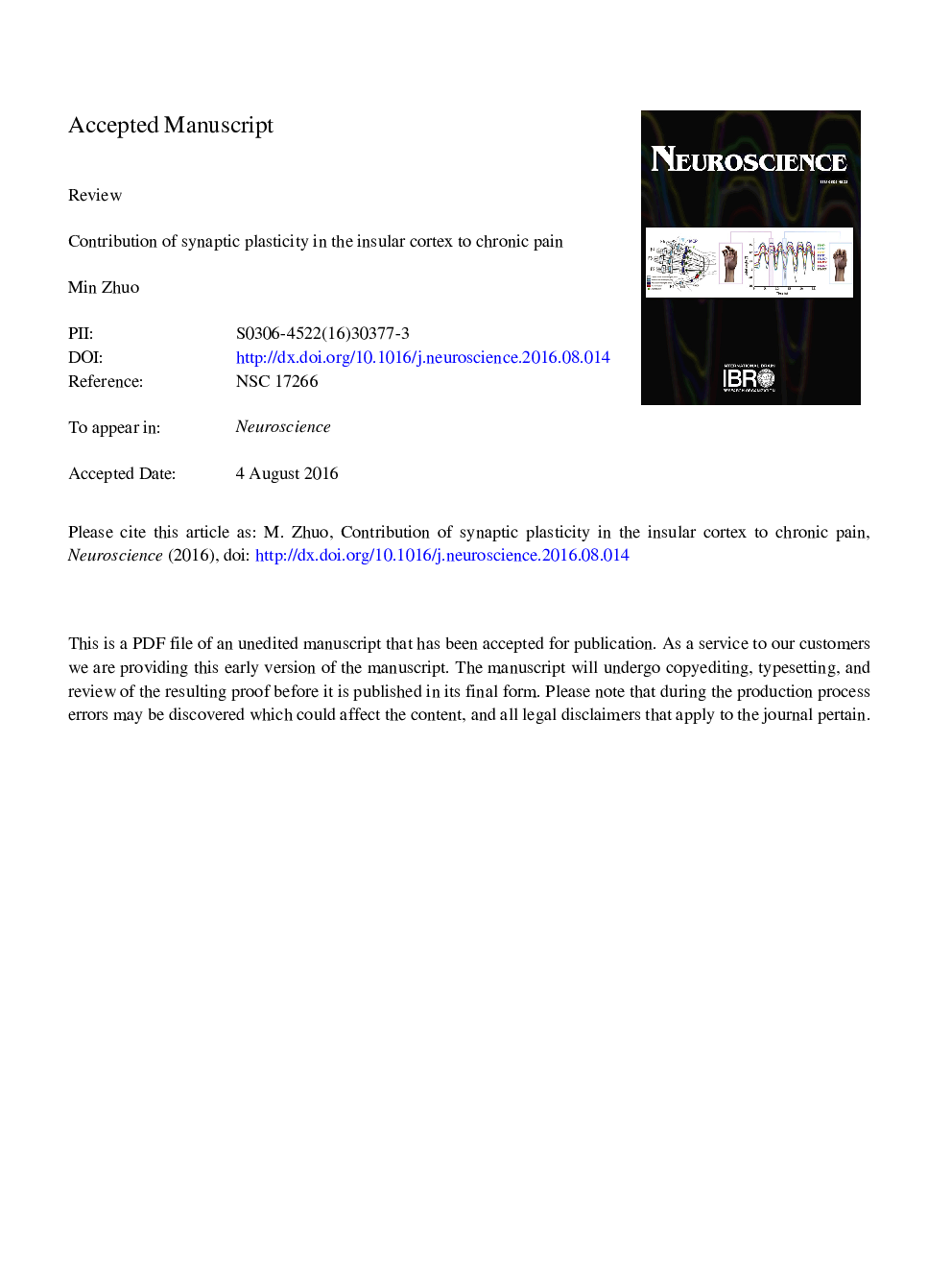| Article ID | Journal | Published Year | Pages | File Type |
|---|---|---|---|---|
| 5737921 | Neuroscience | 2016 | 20 Pages |
Abstract
Animal and human studies have consistently demonstrated that cortical regions are important for pain perception and pain-related emotional changes. Studies of the anterior cingulate cortex (ACC) have shown that adult cortical synapses can be modified after peripheral injuries, and long-term changes at synaptic level may contribute to long-lasting suffering in patients. It also explains why chronic pain is resistant to conventional analgesics that act by inhibiting synaptic transmission. Insular cortex (IC), another critical cortical area, is found to be highly plastic and can undergo long-term potentiation (LTP) after injury. Inhibiting IC LTP reduces behavioral sensitization caused by injury. LTP of glutamatergic transmission in pain related cortical areas serves as a key mechanism for chronic pain.
Keywords
CTAzeta inhibitory peptideL-type voltage-dependent calcium channelPKMζZIPLFSmGluRsL-VGCCPKCEPSCsN-methyl-d-aspartateNMDAACCPSDTBSAMPApKaadenylyl cyclaseα-amino-3-hydroxy-5-methyl-4-isoxazolepropionic acidlong-term depressionConditioned taste aversionlow-frequency stimulationpostsynaptic densitylong-term potentiationLTPexcitatory postsynaptic currentschronic paininsular cortexanterior cingulate cortexLTDprotein kinase AProtein kinase CSynaptic plasticityMetabotropic glutamate receptors
Related Topics
Life Sciences
Neuroscience
Neuroscience (General)
Authors
Min Zhuo,
